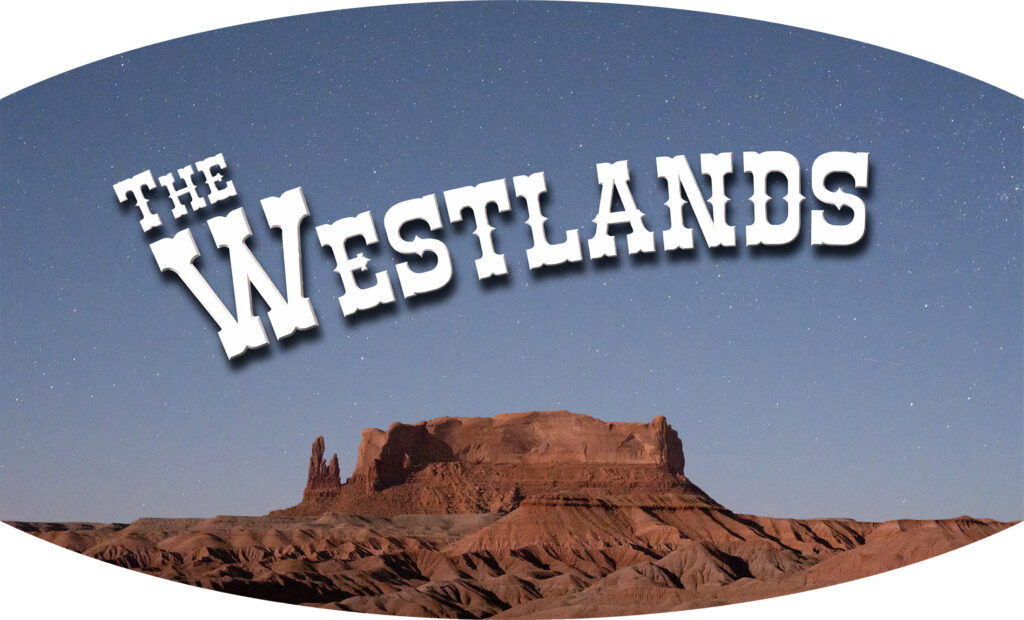
Shop the Westlands Collection
40 years ago was 1985 and Marty McFly could be seen jumping into Doc Brown’s Delorian and going back another 30 years to 1955. During the 1950s, Westerns on TV and on the radio were being aired for the very first time. Kids growing up in the 50s had no idea the stories they were hearing and seeing took place as recently as 40 years prior, in the 1910s. The idea of the Old West seems like forever ago, but it really was still ongoing around 100 years ago from today. The era came to an end when Arizona and New Mexico gained statehood in 1912.
Part of what makes such a recent time line feel like forever ago is the scale of change that occurs within the space of 40 years. For example, in the past 40 years auto manufacturers moved from using carburetors, to fuel injection and onto building hybrid and all electric automobiles. As recently as 1990, we gave up rotary telephones and having only 3 channels on television to entertain us. The internet was already with us when the Beatles released their final album in 1970, but what we know as the World Wide Web formed in 1989 and quickly became mainstream during the mid-90s. Since the end of the 90s, mobile phones and computers have become commonplace, and the rest is, as they say, history. What does any of this have to do with the American West? Quite a lot, really.
The culture of the West, and more specifically, the Southwest, changed drastically between the 1910s and 1950s. And that change has continued to propel into the 21st century as populations boom and the United States has continually worked to define itself as a nation to the world since the 50s. Virtually nothing was left untouched by the transitions the U.S. underwent in this time period, many of which have taken place in this region. Between the 1910s and 1950s gun slingers and dusty cowboys, lonely miners digging up nuggets of gold and silver, and the great rivers flowing from the northern mountains to the sea were replaced with military bases, bomb ranges, pit mines and gigantic dams that redirect those great rivers into basins for electricity production and later use. For indigenous peoples, the old ways gave way to new ways, land and water rights were further restricted and identities were actively stripped away. In the span of only 40 years, America fought in 2 World Wars and the Korean War, survived a pandemic, the airplane was invented, flown in war, upgraded with jets and rockets and turned into a symbol for the future. Hollywood sprang out of the desert when talents moved from New York to the gentler climate of the West Coast, Rock n Roll hit the stage and the automobile replaced horses and oxen opening up possibilities. The 1950’s was the start of an era of scientific innovation and economic boom.
In our own recent history of 40 years, mines started in the 50s and 60s have left huge scars on the land. Radiation from the hundreds of abandoned uranium mines and nuclear tests are now at toxic levels causing cancer across the region and human populations continue to boom alongside those giant dams and their sequestered rivers. Unfathomably large farms consume vast amounts of unregulated ground water, reducing water availability elsewhere. The Gila River, Rio Grande, Little Colorado and Santa Cruz rivers are now frequently dry, being diverted elsewhere. The Colorado River delta itself has dried out and died back, no longer receiving any water from the river upstream. Borders that were once lines in shifting sands have become great iron walls towering 8 meters high, blocking the passage of not only humans but migratory and native animals as well. Solar farms, and mammoth server farms constructed to store personal data, now occupy vast swaths of land, often replacing many of the failed crop farms.
What may have been naïve, but necessary, industrious activity of past generations, gave our nation a sense of pride and respect in the abilities of our citizens’ minds and muscles. But at what cost and to what end may not have been a consideration at the time. Today we are faced with such questions. What impacts do these giant works have at the global scale and for the longevity of our species as well as those within the immediate region? I am not from the Southwest, but this is my country and in respect to that, the Southwest is my backyard and the people living there are my unmet neighbors. As a person alive today, I have great concern for my fellow humans and the impact we have on this planet. I am hopeful we are not damned to annihilation by the hard work of our ancestors and the influences their work continues to have on the environment and the cultures we’ve encountered over the centuries. I believe some of the greatest changes yet will occur in the next 40 to 50 years, and that the work I’ve made today will help to measure the distances we will cover.
“Fix your hearts or die” – David Lynch
Exhibition Walk-Through
Shop the Westlands Collection
The Westlands Gallery
The Westlands Exhibition Announcement
What: Master of Fine Arts Thesis Exhibition
Reception: March 3; 5:00 – 8:00pm
Where: University of Wisconsin – Madison Art Lofts
111 N. Frances St
Madison, WI
Duration: Feb 25 – March 8
Weekday Hours: 8:00 – 6:00pm
Weekends: by appointment only
































You must be logged in to post a comment.